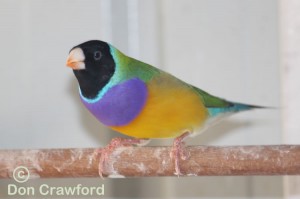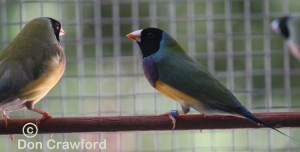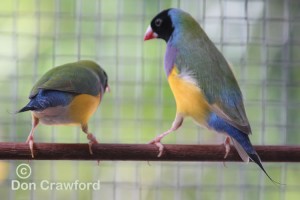What easy access we have today for all things relating to our birds, like Medicated Shell Grit, the abundance of Calcium Mixes, Premixed Egg-Food, and the list goes on and on.
This was not the case in the early days of bird breeding. I do remember buying rather large bagged-up shell grit and spending many hours crushing it up to a usable size for the finches so they had access to calcium which was not readily available anywhere. Spinach was another food that we believed was helping with their Calcium needs (after all (look what it did for Popeye). But we were wrong, as most breeders tragically suffered with soft shelled eggs and egg bound hens. It was fairly obvious that the hens were not getting their Calcium in the correct doses, or not absorbing the Calcium from what they were eating. In both cases that was proven to be right.
We now know that Spinach is a marvellous healthy food containing Calcium and Iron plus other goodies but what we didn’t know was that it contained OXALATE, which binds to the Iron to form Ferrous Oxalate, which then renders much of the Iron unusable by the birds. This also allows only a small amount of Calcium to be available to the birds as Calcium is also effected by OXALATE. So making the Calcium in Spinach a poor Calcium food sauce.
We now know that Calcium is the most abundant mineral in the birds’ body, being deposited in their bones and their soft-tissues. When the birds are breeding and in need, the bird will absorb more Calcium more effectively – therefore the greater the need, the more efficient the
absorption. So a healthy bird on the correct mineral program, using the right amount of Calcium during the breeding season should produce very good quality eggs for many years.
So birds mostly need Calcium when it’s most needed. During the breeding season!!
The supplying of vegetable leaves like Kale, Bok Choy, Watercress, Dandelion Greens or other greens are rich in Magnesium, keeping in mind that most dark greens contain Oxalate which renders it a poor source of Calcium. Both these minerals need to be balanced, some say at a Calcium-Magnesium ratio of say 2 to 1, if there is not enough Magnesium in the birds body it won’t adequately use all the calcium available to it.
Vitamin D
The importance of vitamin D3, also for the absorption of calcium, which can be made naturally by the direct access to the sun’s ultraviolet rays.

Cuttlefish and Calcium bells?
The use of Cuttlefish and Calcium bells, have little if any benefit to your calcium program and should not be used as the only major calcium food. Additives like liquid calcium added to your program are a must.
Benefits of Oyster Shell
Feeding of crushed Oyster Shell – This is a marvellous additive being widely used today for the improvement of the birds health. If there is not enough calcium in the birds blood the bird will take the calcium from the bones, creating long-term health problems. Oyster Shell is absolutely full of calcium carbonate, which is the white part of the shell, the pink part is full of Iodine and Magnesium. These foods are a win-win for the hens health.
Be Very Aware!!
Oyster Shell although a marvellous additive, is not without its problems! “Unrefined” Oyster Shell, if not in a clean and refined state maybe contaminated with Lead, Arsenic, Mercury and Cadmium, so be aware of these poisons if you purchase “Unrefined” Oyster Shell.
“Life is really simple – but we insist on making it complicated.”
~ Confucius 551 – 479 BC
adieu
Don